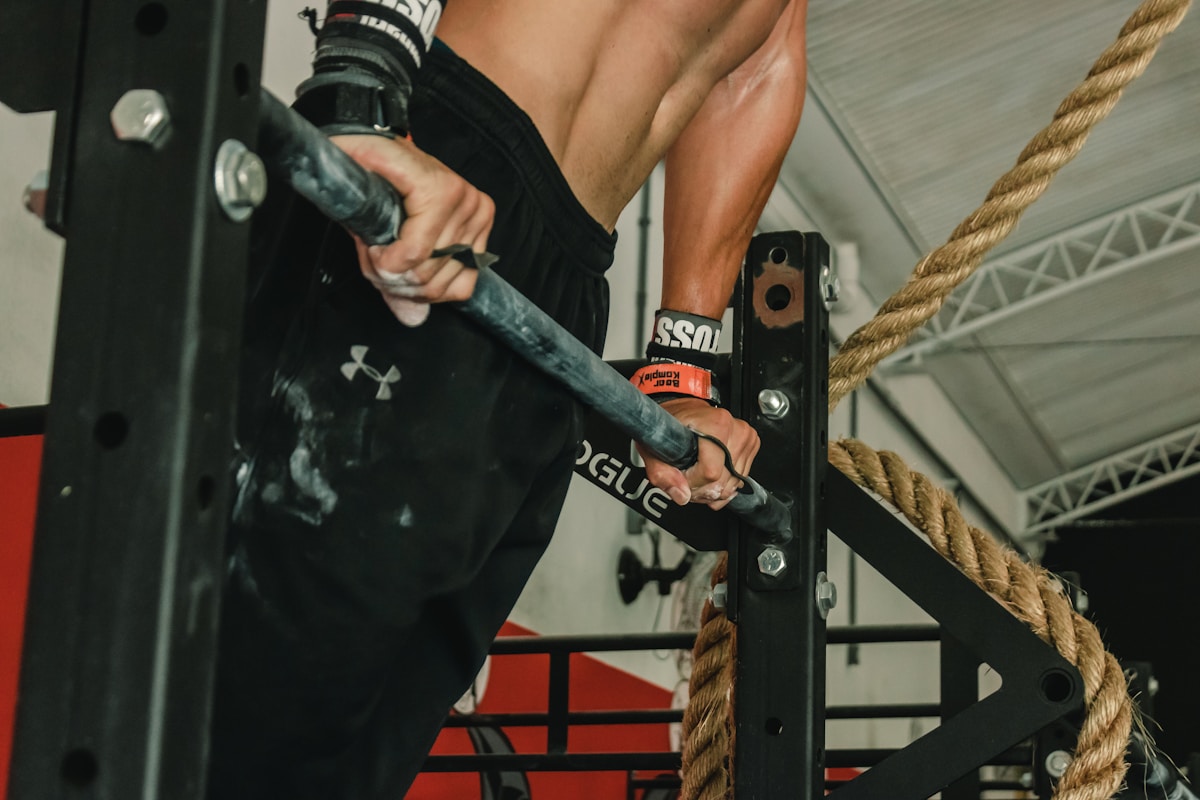Injury Prevention in CrossFit: Tips for Safe and Effective Training
Understanding Common CrossFit Injuries: Identifying the Risks and Vulnerable Areas
CrossFit is known for its high-intensity workouts that push participants to their limits. While it can deliver remarkable fitness results, it also comes with the risk of injuries. Understanding common CrossFit injuries is crucial for identifying the potential risks and vulnerable areas of the body.
One common injury in CrossFit is shoulder impingement, which occurs when the tendons in the shoulder become pinched between the bones. This can result from improper overhead movements or excessive stress on the shoulders during exercises like overhead presses or pull-ups. Another prevalent injury is lower back strain, often caused by improper lifting techniques or excessive loading during movements like deadlifts or squats.
Additionally, knee injuries, such as patellar tendonitis or meniscus tears, can occur due to repetitive jumping or improper landing mechanics. Wrist sprains or strains can also be a result of inadequate support during activities like handstand push-ups or front rack positions.
It’s essential to recognize these common injuries and understand the vulnerable areas to minimize the risk. Proper technique, form, and progression are key factors in injury prevention. Maintaining good posture, engaging core muscles, and using appropriate weights and equipment can help protect vulnerable areas.
By being aware of the risks and implementing preventative measures, individuals can enjoy the benefits of CrossFit while minimizing the chance of injury. It’s crucial to listen to the body, seek guidance from qualified coaches, and prioritize proper warm-up, mobility, and recovery practices to promote safe and effective training.
Warm-Up and Mobility: Preparing Your Body for Safe and Effective CrossFit Training
Warm-up and mobility exercises are essential components of any CrossFit training program, as they help prepare the body for the demands of the workout and reduce the risk of injury. A proper warm-up routine increases blood flow to the muscles, raises body temperature, and improves joint mobility, ensuring that the body is ready for the intense physical activity ahead.
A dynamic warm-up that includes exercises like jogging, jumping jacks, high knees, and arm circles helps to gradually increase heart rate and warm up the major muscle groups. This prepares the body for the specific movements and exercises involved in the workout.
In addition to a general warm-up, incorporating mobility exercises is crucial for injury prevention. These exercises focus on improving joint range of motion, flexibility, and stability. Mobility drills for the hips, shoulders, spine, and ankles can target the areas commonly used in CrossFit movements, such as squats, overhead presses, and Olympic lifts.
By addressing muscle imbalances and improving joint mobility, individuals can enhance their movement patterns and reduce the risk of strains, sprains, and other injuries. Foam rolling, stretching, and using mobility tools like resistance bands or lacrosse balls can help target specific areas of tightness or restriction.
Taking the time to properly warm up and mobilize the body not only reduces the likelihood of injury but also enhances performance. It allows for better technique, increased power output, and improved overall movement efficiency during the workout.
Remember, warming up and incorporating mobility exercises should be tailored to individual needs and the specific workout. Consulting with a qualified coach or trainer can provide guidance on designing an effective warm-up and mobility routine to support safe and effective CrossFit training.
Proper Technique and Form: Mastering Movements to Minimize Injury Risk
Proper technique and form are crucial in CrossFit to minimize the risk of injury and maximize the effectiveness of the movements. Each exercise in CrossFit has specific movement patterns and positions that should be followed to ensure safe and efficient execution.
Mastering the fundamental movements, such as squats, deadlifts, cleans, and snatches, is essential. Learning and practicing these movements under the guidance of a qualified coach helps develop proper mechanics and body awareness. It’s important to focus on maintaining a neutral spine, engaging the core, and distributing the load evenly throughout the body.
In addition to learning the correct form, it’s crucial to listen to your body and understand your limits. Pushing too hard or using excessive weight without proper technique can lead to injuries. It’s important to progress gradually, allowing your body to adapt and build strength over time.
CrossFit emphasizes the importance of scaling and modifying exercises to meet individual fitness levels and abilities. It’s essential to choose appropriate weights and modifications that allow you to maintain proper form throughout the workout. This ensures that you’re working within your limits and reducing the risk of overloading or straining the muscles and joints.
Regular feedback from coaches, trainers, or experienced CrossFit athletes can be invaluable in identifying and correcting form errors. They can provide guidance on technique adjustments, cues for proper positioning, and tips to optimize movement patterns.
By prioritizing proper technique and form, you can significantly reduce the risk of injuries and create a solid foundation for long-term progress in your CrossFit journey. Remember, quality movement is key, and it’s better to prioritize form over speed or load when starting out or learning new exercises.
Recovery and Rest: The Importance of Rest Days and Proper Recovery for Injury Prevention
Recovery and rest are integral components of injury prevention in CrossFit. While the intensity of CrossFit workouts can be exhilarating, it’s essential to prioritize adequate rest and recovery to allow your body to heal, repair, and adapt.
Rest days are crucial for allowing muscles, tendons, and ligaments to recover from the stress of intense workouts. It’s during these rest periods that the body rebuilds damaged tissues and strengthens muscles. Failing to incorporate rest days can lead to overtraining, increased risk of injury, and decreased performance.
In addition to rest days, proper recovery strategies play a significant role in injury prevention. This includes incorporating activities such as stretching, foam rolling, mobility exercises, and active recovery workouts. These techniques help improve flexibility, reduce muscle soreness, and enhance blood flow to facilitate recovery.
Sleep is another critical aspect of recovery. Aim for 7-9 hours of quality sleep each night to support the body’s repair processes and optimize overall performance. Sleep deprivation can impair muscle recovery, cognitive function, and increase the risk of injuries.
Nutrition also plays a vital role in recovery. Consuming a balanced diet that includes an adequate amount of protein, carbohydrates, and healthy fats supports tissue repair and replenishes energy stores.
Remember, injury prevention is a proactive approach, and incorporating rest days, proper recovery techniques, and prioritizing sleep and nutrition are key components in maintaining a healthy and injury-free CrossFit journey. Listen to your body, pay attention to warning signs of overtraining, and give yourself the time and resources needed to recover and rejuvenate.
Scaling and Progression: Gradually Increasing Intensity to Prevent Overuse and Acute Injuries
Scaling and progression are essential strategies in CrossFit to prevent overuse and acute injuries. By gradually increasing intensity and load, you can challenge your body while minimizing the risk of injury.
Scaling refers to modifying workouts to suit your current fitness level and capabilities. It allows you to maintain proper form and technique while still experiencing the benefits of the workout. Scaling can involve reducing weights, adjusting repetitions, or modifying movements to decrease the overall intensity. It’s important to listen to your body and not push beyond your limits too quickly.
Progression, on the other hand, involves gradually increasing the intensity, load, or difficulty of workouts over time. This allows your body to adapt and become stronger without placing excessive stress on your muscles and joints. Progression can be achieved by gradually increasing weights, adding repetitions, or performing more advanced variations of exercises.
Both scaling and progression are individualized and should be based on your own abilities and limitations. It’s important to work with a qualified coach or trainer who can guide you in finding the appropriate scaling options and progressing at a pace that is suitable for you.
By implementing scaling and progression strategies, you can ensure that your workouts are challenging yet safe. This approach allows you to build strength, endurance, and skill while minimizing the risk of overuse injuries or acute injuries from attempting movements beyond your current capabilities.
Remember, the key is to find a balance between pushing yourself and listening to your body’s cues. Gradual and controlled progression will lead to long-term gains and a sustainable CrossFit journey.
Conclusion
Prioritizing injury prevention in your CrossFit training is vital for long-term success and overall well-being. By understanding common injuries, incorporating proper warm-up and mobility exercises, mastering technique and form, prioritizing recovery and rest, and implementing scaling and progression strategies, you can create a safe and effective training routine. Remember, your body’s health and longevity should always take precedence over short-term gains. By following these tips, you can minimize the risk of injuries, train with confidence, and continue progressing towards your fitness goals in the long run.



